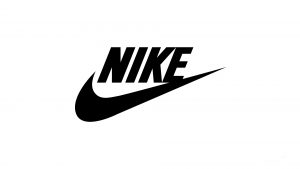 Wall Street has been worried about the strength of Nike (NYSE:NKE) as competition in the athletic gear industry has been heating up. Under Armour is the biggest threat to Nike, with Lululemon Athletica and Adidas not far behind. These companies are chipping away at the company’s decades-long dominant position. Under Armour is currently the second-biggest U.S. sportswear maker. The company is also competing with fast-fashion retailers, luxury brands and department stores entering the popular “athleisure” trend.
Wall Street has been worried about the strength of Nike (NYSE:NKE) as competition in the athletic gear industry has been heating up. Under Armour is the biggest threat to Nike, with Lululemon Athletica and Adidas not far behind. These companies are chipping away at the company’s decades-long dominant position. Under Armour is currently the second-biggest U.S. sportswear maker. The company is also competing with fast-fashion retailers, luxury brands and department stores entering the popular “athleisure” trend.
The Rio Summer Olympics provided Nike with a boost. In the latest quarterly results, which coincided with the Games, revenue increased 8 percent to $9.1 billion, while net profit increased 9 percent to $1.25 billion, or 73 cents per share. Analysts had predicted $8.9 billion and 56 cents, respectively.
Nike is the world’s largest athletic gear maker and is known for high-priced performance footwear and apparel. CEO and Chairman Mark Parker told investors during a conference call that activewear apparel and shoes was outperforming their broader categories. Nike posted consistent sales growth across all the major markets it serves. The growth in North America is particularly notable, with a 6 percent jump in sales. The North American region comprises the bulk of Nike’s business.
Nike reported future orders for the brand’s footwear and apparel would rise 1 percent in North America and 7 percent overall. This was the third time in a row that future orders missed analysts’ estimates. In the same quarter a year ago, North American futures orders showed 14 percent growth. Nike CFO Andy Campion said that Nike would change how it would report figures for future orders in future quarters.
The company also benefited from a 2.5 percent tax rate for the quarter, well below the 18.4 percent rate in the same quarter last year. The quarter was the first of Nike’s fiscal year. Inventories jumped 11 percent to $4.9 billion, a sign that merchandise might not be selling as fast as expected. Last fall, Nike said it hoped to more than double its annual direct-to-consumer sales to $16 billion by 2020. The company’s stock is down 12 percent so far in 2016.
